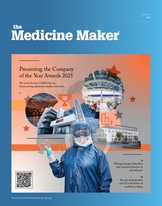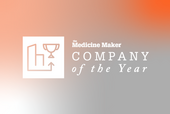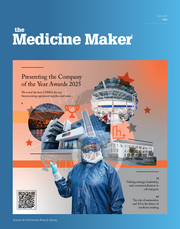Addressing Epilepsy
Overcoming the challenges of a complex group of disorders requires collaboration, embracing technological developments, and acknowledging the gaps in access to medicine
Stefanie Dedeurwaerdere | | 4 min read | Discussion

Contrary to established terminology (and what many people may think), epilepsy isn’t a singular disease with a singular cause but a group of disorders. We therefore commonly use the term “epilepsies”. Historically, clinical trials for epilepsy have centered around the management of seizures, with drug discovery in acute convulsant seizure models leading to anti-seizure medications (ASMs). These drugs typically target the synapse of the neuron or its electrical conductance to suppress seizure occurrence. To date, there are multiple ASMs available for epilepsy management, alongside more holistic treatment options, including the ketogenic diet, vagus nerve stimulation, and neurosurgery.
Looking at future treatment, there are several interventional trials ongoing in phase I-III with the vast majority focusing on seizure types, which will hopefully lead to advancements in the quality and global accessibility of anti-seizure treatments in years to come.
However, ambitions must also go beyond simply controlling seizures. By broadening the scope of research to understand unmet medical patient needs, we can investigate the development of potentially disease-modifying treatments that aim to target underlying disease and its impact more holistically. Anti-seizure medications by their very nature act on seizures, making it relatively easy to measure the direct impact of the treatment. And that’s why, historically, the bulk of clinical trials use this outcome. To come closer to curative treatment, we need to take further steps to discover the underlying causes and pathways that led to the disease and test new theories that can potentially prevent the development of seizure activity.
Understanding the true day-to-day impact of epilepsy, which can differ widely from patient to patient, is also important. We must also recognize that seizures are not the only impactful symptom; there are multiple physiological and mental challenges, including anxiety and depression, which need to be addressed. Close relationships between researchers and patients (and the insights they give us) have led us to understand the complex symptom map, but the more varied and subjective nature of some these symptoms such as attention deficits, hyperactivity, and anxiety can make them more challenging to analyze. As researchers, we must identify new models that can help us measure broader symptoms and redefine patient populations based on these findings.
In the technology space, digitalization has changed significantly over the past five years with new and improved ways of digital communication making it easier to interact with partners and patients on a global scale, as well as allowing us to centralize patient data and make it more accessible to research teams. For example, we are continuously growing our molecular analysis on human brain tissues from patients living with epilepsy, which was only made possible by collaboration with leading academic universities and improved machine learning and sequencing capabilities.
Patients are among the most important partners helping to shape research programs that truly deliver on unmet needs. Collaboration with community groups, grassroots organizations, and patient advocacy groups allows us to gain an increased understanding of unmet patient needs. Above the development of new treatments, we need to continue to work to erase the systematic barriers faced by people living with epilepsy, such as reducing the stigma, impact, and burden associated with it.
In 2022, the 75th World Health Assembly approved the Intersectoral Global Action Plan (IGAP) on Epilepsy and Other Neurological Disorders 2022–2031 (1), which set out clear targets for us all of us to aim for to improve the lives of people living with epilepsy. Looking at the next decade of research in the epilepsy treatment market, I see three key priorities that UCB and wider pharmaceutical organizations should embrace.
When thinking about the future of epilepsy treatment, a key priority should be expanding access to current anti-seizure medication for the millions of people living with epilepsy worldwide. More than 50 million people have epilepsy, nearly 80 percent of whom live in low- and middle-income countries. An estimated 70 percent of people with epilepsy could be seizure free if properly diagnosed and treated, so an immediate priority should be expanding trial areas for those in urgent need of treatment (2).
Secondly, to advance the epilepsy treatment ecosystem, researchers need to remain innovative in exploring beyond the anti-seizure medications and embrace collaborative efforts that combine R&D efforts with patient insight.
Finally, we must harness the power of new digital and artificial technologies to improve speed and efficiency in data analysis, build a greater understanding of epilepsy pathways, and drive us closer to disorder modifying and curative treatment.
- WHO, “Intersectoral global action plan on epilepsy and other neurological disorders” (2023). Available at: https://bit.ly/3SvtI1H
- WHO, “Epilepsy” (2023). Available at: https://bit.ly/3MvGlpP
Global Strategy Lead for Pipeline Development in Global Epilepsy & Rare Syndromes, UCB, Brussels


















